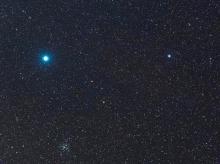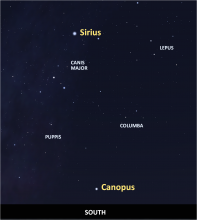The hottest, stickiest time of the year in the northern hemisphere is known as the Dog Days. When the phrase was created it was associated with the first appearance of the Dog Star, Sirius, in the dawn sky, which came in June. Today, though, the star's first dawn showing doesn't come until early August. Various schemes are used for reckoning the dates of the Dog Days. Some count from early July to mid-August. Others are less precise, describing the most sweltering part of the summer as the Dog Days. [Yama ZsuZsanna Markus/Pixabay]
You are here
Dog Days
The brightest star in the night sky has played a key role in the calendars of many cultures. In ancient Egypt, for example, its first appearance in the dawn sky marked the beginning of a new year, and heralded the annual flooding of the Nile. And in Greece and Rome, that dawn showing ushered in the Dog Days — the most sweltering time of year. It’s a phrase we still use today.
When the phrase was coined, the star Sirius first climbed into view around the end of June — at the start of summer and a long run of hot, humid days. Sirius is the brightest star of the constellation Canis Major, the big dog. So it’s known as the Dog Star. People associated the star with the climate, so they called that time of year the Dog Days.
Thanks to an effect known as precession, though, the stars gradually shift position relative to the Sun. So now, Sirius doesn’t peek into view in the dawn sky until August. From the southern states of the U.S., it’s appearing right about now. It won’t emerge from the Sun’s glare from more northerly latitudes for another week or so. For those who can see it, it’s in the east-southeast, almost directly below the line of stars that marks Orion’s Belt.
That shift has changed the way we think of the Dog Days. In early times, the phrase referred to a specific time of year — generally from early July to about mid-August. Today, though, it refers simply to the hottest period of the year — the Dog Days of summer.
Script by Damond Benningfield
Get Premium Audio
Listen to today's episode of StarDate on the web the same day it airs in high-quality streaming audio without any extra ads or announcements. Choose a $8 one-month pass, or listen every day for a year for just $30.







